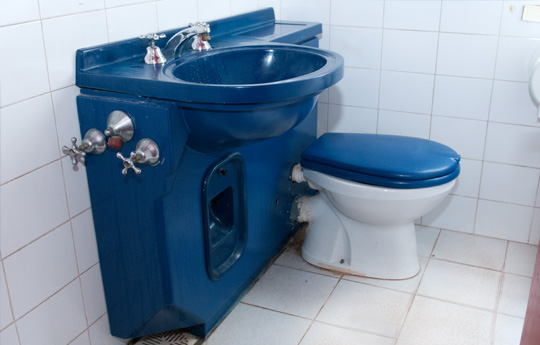TECHNOLOGY TRANSFER OFFICE
Saving water without realizing it: bathrooms that recycle
Innovative piece of bathroom furniture saves up to 20 litres of water a day and per person.
Drinkable water shortage motivated the development of new techniques connected with the design and the setting of a piece of bathroom furniture that could contribute to saving this resource.
This is the case of Héctor Massuh, CONICET principal researcher at the Centro Experimental de la Vivienda Económica (CEVE, CONICET-AVE), who together with his team managed to develop a device that groups the basic needs that a traditional bathroom has. MASI and MSM models were designed to be incorporated in the house easily and with wide variety of advantages.
Apart from providing hot and cold water, the new models of comprehensive bathroom furniture drain waste water (bathroom-kitchen-laundry room) and recycle the water from the basin to be used again in order to clean the toilet bowl. “They are light, compact and can be placed against a wall after the floor and tiles are laid. Besides, they are easy to set up”, Massuh explains.
The water supply and drainage system are produced at the workshops, where the parts are also assembled and the final product is packed. The casings are made of high impact plastics and, according to the researcher, “more than 30 units a day can be produced with eight hour working days”, he states.
The designs are thought to be made with materials such as steel plate, stainless steel and plastic, and they save large quantities of water per person.
Regarding that, there are different variants of the models that also seek to reduce the consumption: “When we recycle water from the basin to clean the toilet bowl, up to 20 litres of water are saved”, the researcher affirms.
The figures are significant if this individual situation is transferred to a city scale with a million inhabitants. Approximately 20 millions of litres of water a day would be saved, a number equivalent to the daily consumption of a city of 80 thousand inhabitants (250 litres per inhabitant a day).
Although both models are designed to provide the same benefits, the MSM device is a more sophisticated corner piece suitable for small spaces due to its sizes (55 x 55 x 85 cm high).
“The water is and must be a source of life, so it is a strategic resource that should be preserved with our personal, community and institutional attitudes”, the researcher concludes.
- By Jimena Naser
